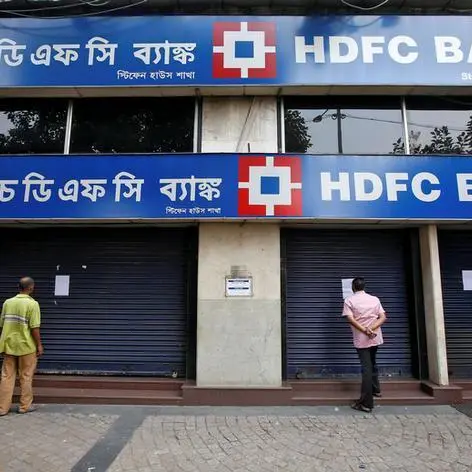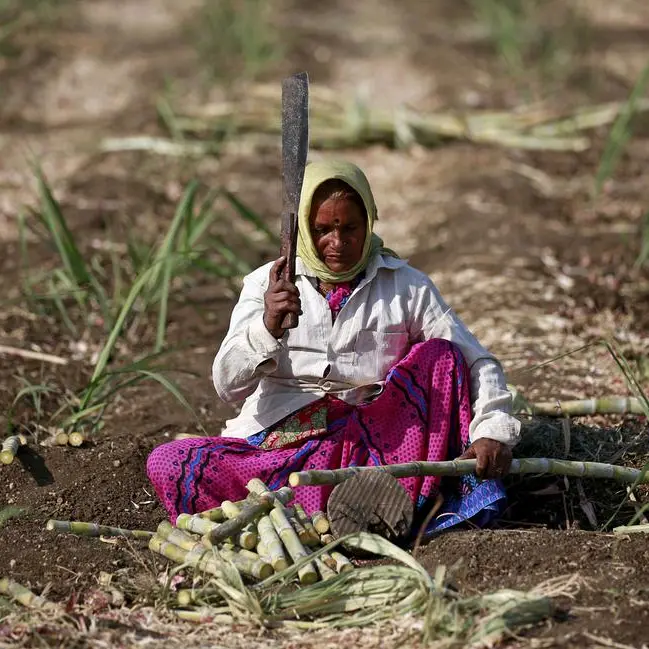Welcome to Zawya Markets. Each Sunday we will be featuring an interview with a different analyst or markets expert from around the region.
If you would like to participate please email gerard.aoun@refinitiv.com.
1) What are your expectations for 2019 in terms of total bond issuance in the Gulf and what are the factors that will drive GCC issuances in 2019?
Total hard currency bonds (USD, EUR, GBP, and CHF) issued in the MENA region during 2018 stood at $84 billion. This level is expected to maintain in 2019 based on corporate refinancing needs and expected sovereign fiscal deficits. The region has already seen issuances of more than $10 billion during the first month of the year and the momentum is expected to continue for the rest of the year.
Demand for GCC debt continues to remain high as seen from the numbers in 2018. New issues were oversubscribed 2x – 2.5x on average in the primary market during 2018, with regional invertors getting around 50-60 percent allocation, while the rest was placed outside the region. Some 60 percent of the allocation of new bonds were made to fund managers. We believe that with additional passive fund flows after the inclusion in the JPMorgan EMBI (Emerging Market Bonds Index), the demand for regional debt will get a further boost in 2019.
Regional issuances would be driven by a number of fundamental factors. The region’s evolving financial markets are seen to be adding additional depth to the market with new kinds of financial instruments in the region. As a result, investors, including individuals, family offices and institutional investors, will not have to look at international markets for asset allocation. In addition, there was always a need for a yield curve based on which corporate instruments can be priced. With the slew of issuances over the past couple of years, corporate issuances are appropriately priced and this is reflected in the increasing share in the regional debt market. Moreover, corporate debt of more than $150 billion is set to mature over the next five years, which is expected to be refinanced in the near term. The aforementioned factors, coupled with sovereign funding needs for infrastructure spending, should drive issuances in the near term.
2) What are the risks of investing in GCC bonds compared to their emerging market peers? And what are the benefits?
Clearly, positives far outweigh concerns when it comes to GCC bonds. One of the biggest positives is related to currency risk. Almost all the GCC countries have their currencies pegged to the United States dollar except for the Kuwaiti dinar, which is pegged to a basket of currencies, although it gives a larger weight to the dollar. This insulates the economies from currency volatility which is a major risk in case of other emerging market economies.
Lack of a sovereign debt curve was one of the key concerns related to GCC bonds. However, with issuances within the GCC increasing multifold over the past few years led by the decline in oil prices, this issue has started getting greater attention and is been addressed gradually. Moreover, lack of a secondary market for bond trades was another shortcoming which is now being resolved with a number of exchanges allowing bond trading platforms. Nevertheless, geopolitical tensions are likely to continue and could impact investor sentiment and behaviour. Also, the volatility of current account balances due to an overdependence on oil market makes the region vulnerable. In terms of advantages over emerging market countries, the average GCC country rating is better than the emerging market universe. Countries that have lower credit rating enjoy the support of other members in the group, as seen recently in the case of Bahrain.
3) What is the outlook for Bahrain’s economy following the $10 billion bailout from its GCC neighbours? How can the country meet its target of balanced budget in 2022?
Bahrain has one of the most diverse economies in the GCC with both oil and non-oil sectors driving the economy. Bahrain’s non-oil sector contributes more than 80 percent of the country’s GDP. The country’s non-oil sector continues to benefit from continued spending on infrastructure underpinned by the recent infusion from the GCC countries that added confidence in the country’s spending plans. On the other hand, the outlook for oil is relatively better than what it was last year. As a result, the country’s GDP growth is expected to gradually reach 2.4 percent in 2020, supported by a 3 percent growth in non-oil GDP. In terms of Bahrain’s budget, the recently released numbers for 2018 showed a 35 percent drop in its deficit as a part of its efforts to reach a balanced budget by 2022. The country plans strict control on costs which will also be achieved with the planned voluntary retirement scheme for state employees coupled with measures to raise revenue by way of implementation of VAT.
4) Fitch downgraded Oman to “junk” status in December. What steps need to be taken by the government to stay away from a credit crunch?
Post the downgrade, the Omani government has slowed down spending plans to an almost flat spending forecast for 2019. In addition, revenues for the year are based on an average oil price of $58 per barrel, which is conservative as compared to last year’s average OPEC crude price of $69.7 per barrel. This should provide some cushion and lower the budgeted deficit of 2.8 billion Omani rials ($7.28 billion) for 2019. A credit crunch for the Sultanate is not expected given marginal debt maturities in the near term, as compared to its war chest of more than $40 bilion in the form of reserves and sovereign fund. Furthermore, the planned removal of the subsidy system, along with diversification effortsm should lower the burden of deficits on the country’s accounts.
5) Do you envisage higher growth for Saudi Arabia in 2019, compared to the previous year? Will the diversification efforts help the country?
Diversification efforts in Saudi Arabia are not expected to have a sizable impact in the near term given the extensive impact of oil prices on the economy. The Kingdom has adequately drafted its transformation plan with special focus on diversifying the economy away from oil dependence. Economic growth in 2019 would once again be driven by oil prices, which have been stable since the start of the year. However, much of this is driven by the OPEC+ agreement to slash oil output. As we approach closer to mid-year, the decision related to extending the agreement would drive oil prices. Meanwhile, the diversification efforts implemented by the country is expected to meet a number of objectives starting with the unemployment issue, in addition to providing sustainable and stable economic growth in the coming years.
6) Are geopolitical tensions in the Middle East impacting fixed income investors’ sentiment?
Yes, but the impact of regional geopolitics is gradually declining as the markets become more connected with global financial markets. In addition, there is a growing effort to become a self-reliant economy with local industries and manufacturing facilities. This would have a dual impact of improving the non-oil economy as well as providing much-needed employment to local youth.
7) Do you expect emerging markets to be attractive for portfolio allocations in 2019?
In the debate over emerging markets versusdeveloped markets, we believe the U.S. and Japan are the only developed markets that have a positive outlook going into 2019, with U.S. growth expected to peak in the coming years. On the other hand, a majority of the European developed markets are under stress and the positives seen at the start of 2018 quickly disappeared by the end of the year. Emerging market equities are an attractive option after a 17 percent decline in 2018 that came as a result of tariffs and trade wars. Emerging market continues to be an attractive option for risk diversification and is expected to show growth from a low base.
8) What impact do you think that the inclusion of five GCC countries into JP Morgan’s Emerging Market Bond Index will have on demand for regional fixed income products? And what is the weight for each of the GCC countries in the index?
GCC sovereign and quasi-sovereign debt became eligible to be included in the JP Morgan EMBI series from 31 January 2019. Both conventional bonds and sukuk are eligible for index inclusion, however sukuk will need to have a credit rating from at least one of the three major rating agencies. Approximately $300 billion worth of assets are benchmarked against the JP Morgan EMBI series, so this inclusion could translate into around $30 billion of additional inflows to GCC debt instruments. Furthermore, the benchmark index inclusion provided a strong technical bid for regional debt in 2018, as active investors positioned ahead of the actual implementation date. We expect to see a further boost as passive asset allocators follow suit in February 2019.
Saudi Arabia, Qatar, United Arab Emirates, Bahrain and Kuwait are expected to have an approximate weight of 3.1 percent, 2.7 percent, 2.6 percent, 2.1 percent and 0.8 percent, respectively. As a result, after the addition of these high quality names, the average rating of the index is expected to improve. Oman is already in the index with a weight of 2 percent. On an aggregate basis, the GCC is expected to represent about 13% of the Index.
With the inclusion of GCC countries we can expect a few things to happen - the average credit quality for the Middle East basket will move above the global emerging market sovereign bond universe average. The risk premium will thereby turn in favoor of the Middle East basket, and regional bonds will trade at lower credit spreads compared to average emerging market levels.
The average credit quality for the Middle East sovereign universe at the end of 2018 (prior to GCC inclusion) was two notches lower than for global emerging market sovereign bonds, so these sovereigns had to pay an above-average risk premium. The premium has increased by 50 percent from 60 bps to 90 bps in the last five years. For 2019, we remain positive because of EMBI technicals and the recent index inclusion.
9) How do oil prices affect government and corporate issuances in the region? What do you expect for 2019?
Oil prices are the key reason for the surge in issuances by the GCC countries during the past three years. The decline in oil revenues coupled with continued spending plans by the governments forced issuance of multi-billion dollar bonds to meet budget requirements. Although some projects were deferred and even shelved, overall, the spending trend remained robust by some of the largest spenders in the region, resulting in fiscal deficits. Most of the countries are expected to run a deficit budget for the next few years indicating higher issuances to plug the budget revenue shortfall. Issuances by corporates is also expected to remain positive y-o-y as the fixed income market develops in the region, offering greater incentives to use bonds and sukuk along with the traditional ways of funding. According to Bloomberg data, corporate debt instruments of more than $150 billion are set to mature over the next five years that needs to be financed.
For the oil market, volatility has returned and looks like it is here to stay in the short-to-medium term. In the last months of 2018, global crude oil prices moved from four-year highs to a 14-month low, triggered by geopolitical actions that clouded near-term supply visibility and by a softening global economic outlook. Currently, oil prices are stable above the $60 per barrel mark, which augurs well for planning and budgeting. Nevertheless, we expect volatility to return by mid-year as OPEC production once again comes into focus. The median estimates for oil show modest improvement by year-end to reach $70 per barrel, which we believe would be an upper limit in the medium term.
10) How is uncertainty around global economic growth affecting the fixed income space?
We believe that the uncertainty surrounding global economic growth rates, with the US expected to peak and China gradually stabilising at a growth rate that is lower than historical average being positive for the region. The credit worthiness of the GCC countries, in addition to the region’s project pipeline makes member countries the next contenders for drivers of global economic growth in the medium term. However, strict implementation of plans would be essential for success. These factors should drive issuance both by corporates and governments.
(Editing by Gerard Aoun and Michael Fahy)
(gerard.aoun@refinitiv.com)
Any opinions expressed here are the author’s own.
If you would like to participate in the Zawya Markets Weekly Q&A please email gerard.aoun@thomsonreuters.com.
Our Standards: The Thomson Reuters Trust Principles
Disclaimer: This article is provided for informational purposes only. The content does not provide tax, legal or investment advice or opinion regarding the suitability, value or profitability of any particular security, portfolio or investment strategy. Read our full disclaimer policy here.
© Opinion 2019












